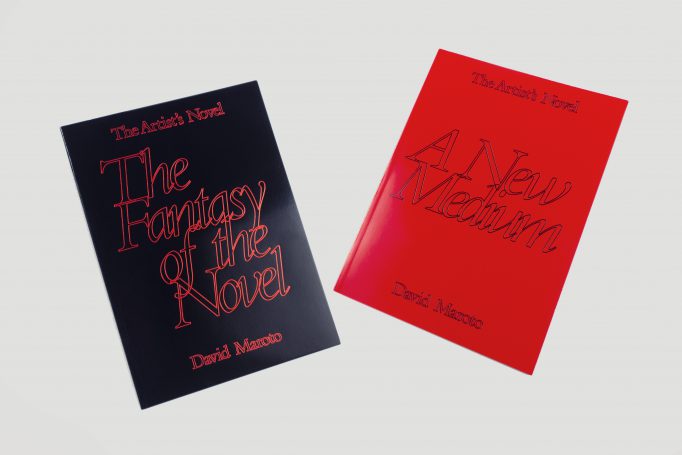David Maroto – The Artist’s Novel: The Novel as a Medium in the Visual Arts | In conversation with Krist Gruijthuijsen | 27.10.2021, 8pm @ Motto Berlin
Posted in Events, Motto Berlin event on October 22nd, 2021Tags: David Maroto, Krist Gruijthuijsen, Part 1. A New Medium (theoretical essay), Part 2. The Fantasy of the Novel (novel)

Photo credit: Anna Azzali. Courtesy of Mousse Publishing.
Book launch:
The Artist’s Novel: The Novel as a Medium in the Visual Arts
In conversation with Krist Gruijthuijsen
Wednesday, 27 October 2021, 8pm
Motto Berlin
Skalitzer Str. 68, im Hinterhof
10997 Berlin
Publication in two volumes:
Part 1. A New Medium (theoretical essay)
Part 2. The Fantasy of the Novel (novel)
Why do artists write novels? What does the artist’s novel do to the visual arts? How should such a novel be experienced? In recent years, there has been a proliferation of visual artists who create novels as part of their wider art projects. They do so in order to address artistic issues by means of novelistic devices, favoring a sort of art predicated on process and subjectivity, introducing notions such as fiction, narrative, and imagination. In this sense, it is possible to speak of a new medium in the visual arts; yet, very little is known about it.
Join us for an evening of discussion during the launch of David Maroto’s The Artist’s Novel: The Novel as a Medium in the Visual Arts (Mousse Publishing, 2020). This two-volume book is the first to explore in depth the subject of the artist’s novel. Part 1: A New Medium aims to critically elucidate the pressing questions posed by the emergence of a new artistic medium with a theoretical approach to a number of key case studies.
Part 2: The Fantasy of the Novel is a research project in the form of a novel, which examines the process of creation of an artist’s novel. The protagonist is in the position of a detective who tries to understand the conditions under which an artist decides to write, and how such a thing is possible within an artistic setting.
Curator and art critic Krist Gruijthuijsen will accompany David in the discussion in order to examine the different ways contemporary artists have employed the artist’s novel, and its impact on the curatorial and institutional context in which it appears and with which it interacts.
Bios
David Maroto is a Spanish visual artist based in the Netherlands and a PhD from the Edinburgh College of Art, with an extensive international artistic practice. In 2011, he spent time at a residency in ISCP New York, where he met curator Joanna Zielińska and began a collaboration called The Book Lovers, a research project based on the creation of a collection and bibliography of artists’ novels with the continuous support of M HKA (Antwerp). This collaboration has enabled them to engage with a host of international institutions. David has published numerous articles and edited various publications, including Artist Novels (Sternberg Press, 2015); Tamam Shud (Sternberg Press, 2018); and Obieg Magazine no. 8, ‘Art & Literature: A Mongrel’s Guide‘ (2018).
Krist Gruijthuijsen is a curator, art critic, and director of KW Institute for Contemporary Art. He was artistic director of the Grazer Kunstverein in Graz in 2012–16 and has been course director of the MA fine arts department at the Sandberg Instituut in Amsterdam since 2011. He is one of the co-founding directors of Kunstverein in Amsterdam and has organised numerous exhibitions and projects over the past decade, including Manifesta 7 (Trentino-South Tyrol,IT), Platform Garanti Contemporary Art Center (Istanbul), Artists Space (New York), Swiss Institute (New York), Galeria Vermelho (São Paulo), Stedelijk Museum (Amsterdam), Van Abbemuseum (Eindhoven), Arnolfini (Bristol, UK), Project Arts Centre (Dublin), Utah Museum of Contemporary Art (Salt Lake City, US), and Institute of Modern Art (Brisbane). Gruijthuijsen has produced, edited, and published extensively with JRP|Ringier Sternberg Press, Mousse Publishing, Printed Matter, Walther König, and Kunstverein Publishing, among which The Encyclopaedia of Fictional Artists (JRP|Ringier, 2010).
